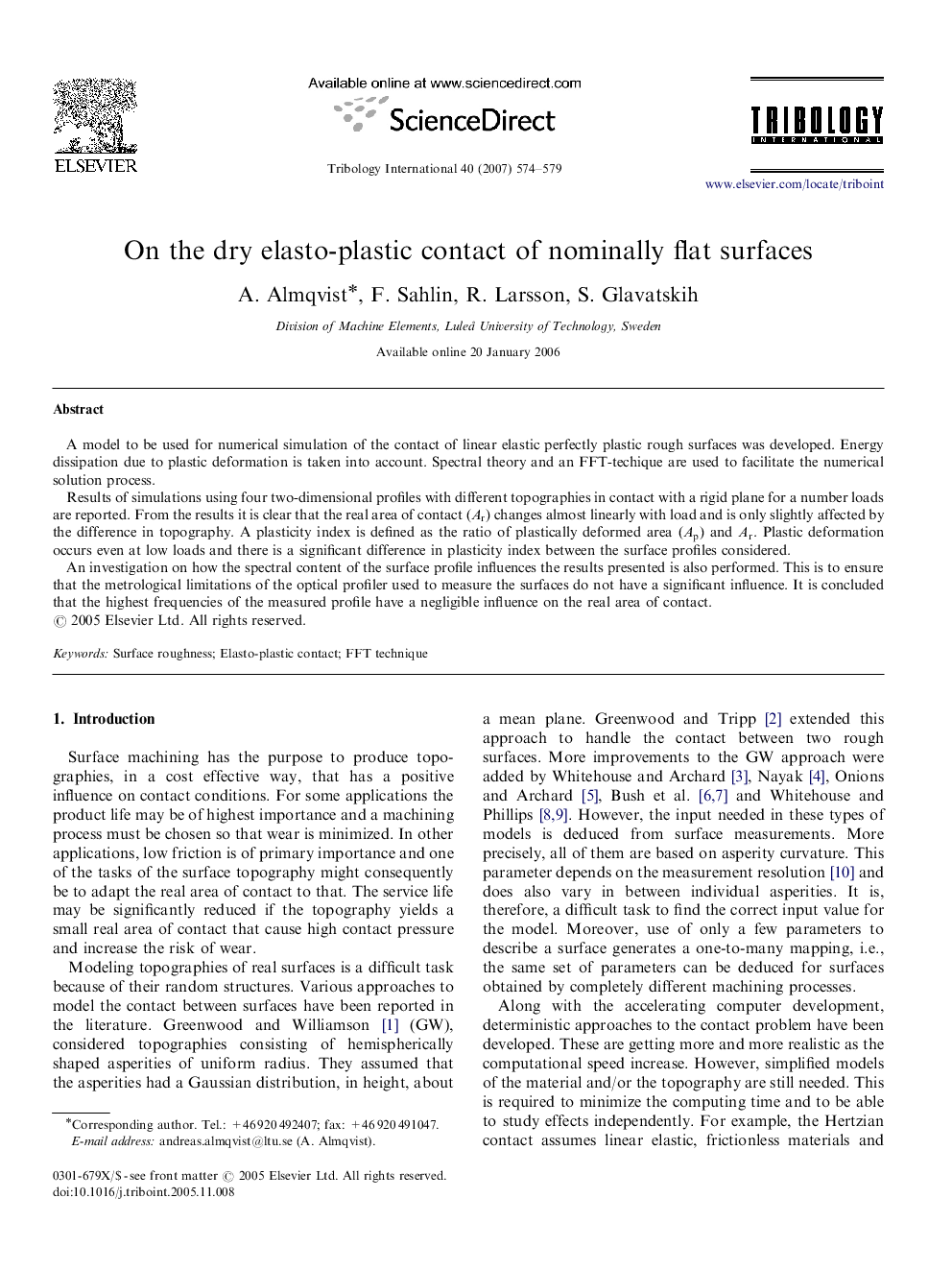| Article ID | Journal | Published Year | Pages | File Type |
|---|---|---|---|---|
| 616146 | Tribology International | 2007 | 6 Pages |
A model to be used for numerical simulation of the contact of linear elastic perfectly plastic rough surfaces was developed. Energy dissipation due to plastic deformation is taken into account. Spectral theory and an FFT-techique are used to facilitate the numerical solution process.Results of simulations using four two-dimensional profiles with different topographies in contact with a rigid plane for a number loads are reported. From the results it is clear that the real area of contact (ArAr) changes almost linearly with load and is only slightly affected by the difference in topography. A plasticity index is defined as the ratio of plastically deformed area (Ap)(Ap) and ArAr. Plastic deformation occurs even at low loads and there is a significant difference in plasticity index between the surface profiles considered.An investigation on how the spectral content of the surface profile influences the results presented is also performed. This is to ensure that the metrological limitations of the optical profiler used to measure the surfaces do not have a significant influence. It is concluded that the highest frequencies of the measured profile have a negligible influence on the real area of contact.
